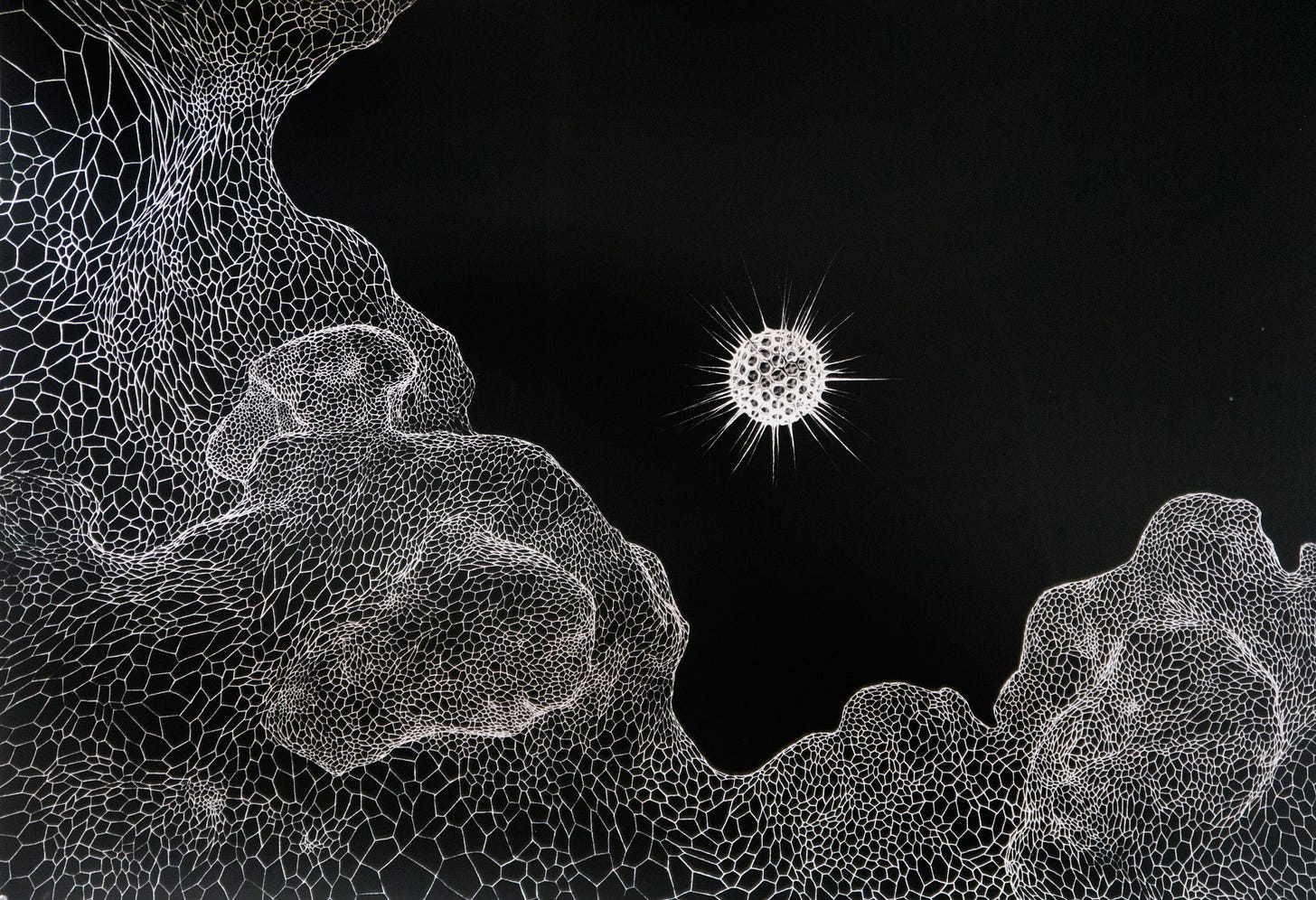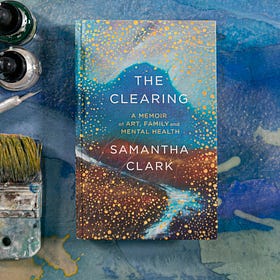The Winter Solstice is almost upon us.
Here in Orkney sunrise is after 9am and sunset around six hours later. Even at midday the sun, our nearest star and source of all light and life, barely reaches an altitude of ten degrees. The sunlight we do see is enfeebled, slanted, often muffled by thick cloud.
This is the dark season.
But there are things that only show themselves in the dark. A different kind of understanding can unfold in it.
In my book The Clearing I wrote about what might be discovered in the spaces between things, and about seeking to understand what darkness reveals. This week of the Winter Solstice I share a short extract from the chapter “Dark Matter” about the dark space between stars, where light is born.
You just have to sit with the dark to learn its lessons. You need to take your time, let your eyes adjust. In the end, what darkness shows us is that our eyes are not to be relied on, even though we believe so confidently in them. During the Enlightenment, scientists used the properties of light and lenses to see further outwards and inwards than ever before, slowly opening up the worlds of the very small and the very big with increasingly powerful telescopes and microscopes. Galileo, Kepler, Copernicus, van Leeuwenhoek, Hooke, with their finely ground lenses, pressing forward their project to shed the clear light of reason on every dark corner of nature. More and more worlds in heaven and earth were illuminated. Mountains on the moon and hairs on the leg of a flea. Animalcules wriggling in a drop of pond water.
But the picture that emerged was strangely disconcerting, dislodging certainty rather than cementing it. Looking for answers seemed only to lead to more questions. The image we once held of ourselves as the fulcrum around which everything revolved was steadily eroded. Copernicus discovered that the Earth is not the centre; it spins around the sun. Huygens suggested in the seventeenth century that the sun might be a star. In the early nineteenth century, from the measurements of Bessel and other astronomers, we understood that our sun is just another one of billions of similar stars, a main-sequence dwarf star of moderate temperature, and that our whole teeming world is just one tiny speck among billions of others.
In this steady displacement of certainty and control, we learned that the universe is wilder and darker than we ever imagined. We discovered that the illumination of light can only show us a fraction of what is. James Clerk Maxwell looked through the lens of mathematics and saw much further. He saw that light, magnetism and electricity are of the same order. He understood that light is not a thing, nor even a stream of things, but a humming radiance, of the same nature as the light we can’t see, the whole wide spectrum of electromagnetic radiation. We can only see the thin slice our eyes can focus on, and miss all the rest.
Only about 10 per cent of the atoms in the universe are bundled into luminous stars. The rest are scattered in the dark spaces between stars, as gas clouds, planets or dust particles, none of which give off light. Most of the theoretically visible matter in the universe is not incandescent like a star, but tucked away in the dark. The shining universe, the matter that we can see when we look up on a clear night, is a bedazzlement. Like the sun, it blinds us.
Not only is most of the ordinary matter in the universe hidden in the unlit spaces between the stars, all of the matter that we could ever see is, according to modern physics, just a tiny percentage of the matter in the universe. The rest remains stubbornly elusive. The luminous stars in a galaxy occupy only the inner regions of an enormous sphere of unseen dark matter that makes up most of a galaxy’s mass. This dark matter apparently makes up 80 per cent of the mass density of the universe.
Astronomers still don’t know exactly what dark matter is, but they know it’s important. It’s called ‘dark’ because it doesn’t emit or reflect light, but really it’s more transparent than dark. It doesn’t interact with light at all, or with the electromagnetic force that makes normal matter seem solid when it is really mostly empty space, so it passes straight through undetected. Dark matter particles are streaming through us all the time, but they can’t be seen or felt. They can only be inferred from the clues they leave behind in the large-scale structure of the universe, in the speed of rotating galaxies and the gravitational pull they create.
We may only just have realised it’s there, but dark matter is ancient. It existed before ordinary matter. The incandescent constellations we see when we look up at the night sky only exist because the gravity of dark matter slowly pulled galaxies together and ignited the stars. Bright spiral galaxies like Andromeda are wrapped and held in a much vaster, invisible halo of ancient dark matter, its dull pull clumping galaxies together like dust seeding rainclouds.
Dark matter doesn’t emit or reflect light itself, and yet, by pulling matter together to create stars, it makes light possible. The dark space between things is not a blank void but the source of substance, energy and motion, the boundless to apeiron of the Greeks, fertile with possibility, setting matter ablaze as stars, generating light and life.
All the stars, moons and planets in a hundred billion swirling galaxies are nothing but a sparkle of bright froth on the surface of an unseen sea of dark matter where light is born.
Dear Friends and fellow Life Boat voyagers,
Thank you so much for reading my work these past few months. I moved my weekly newsletter over to Substack back in September and I’ve hugely enjoyed discovering new readers, writers and artists since then. It’s been wonderful to receive your responses, comments and suggestions for other reads. Do keep them coming!
I’m taking a break over the Winter Solstice, Christmas and New Year so The Life Boat won’t be sailing again until January 10th.
I have some exciting plans for where the Life Boat will be journeying to in 2024, with some offers for my paid subscribers which I’ll write more about soon.
In the meantime I wish you a restful, peaceful and restorative holiday.
warmest wishes
Sam
The Clearing
“The Clearing” is a memoir about ‘spaces between’ and what may be learned in them. As I clear the family home after the death of both my parents, the memories held there prompt reflections on my family’s flawed strategies for coping with my mother’s mental illness, the isolation of my father in caring for her, and how these relationships shifted as my pa…











Clarification: Afloat, not Being Afloat (a bit wordy).
Yes, nice and quiet: just the way we like it. Not a white Christmas here in Maine, alas, but now we have lots.
The LifeBoat is readying for the sea again...
That makes me long for my rowboat! May 1 she can go back in the harbor :)